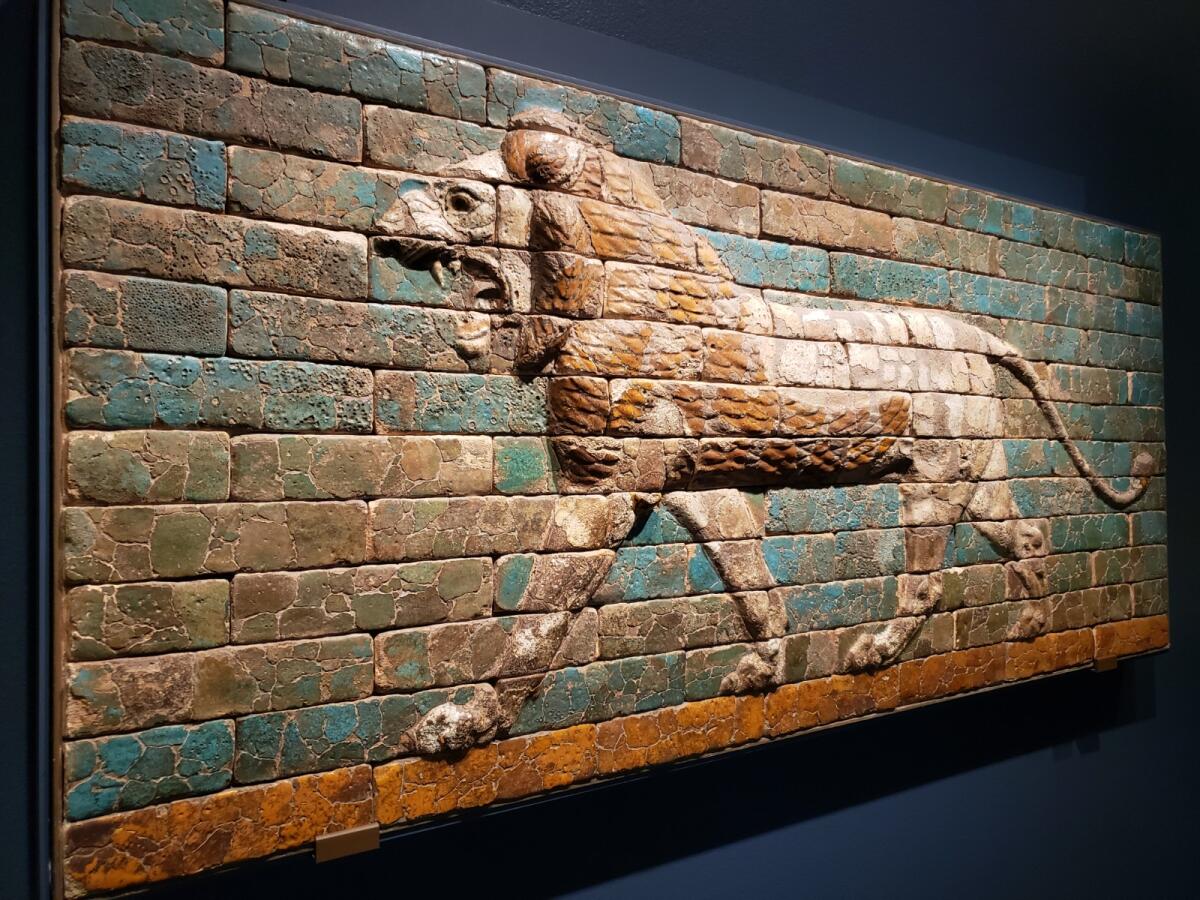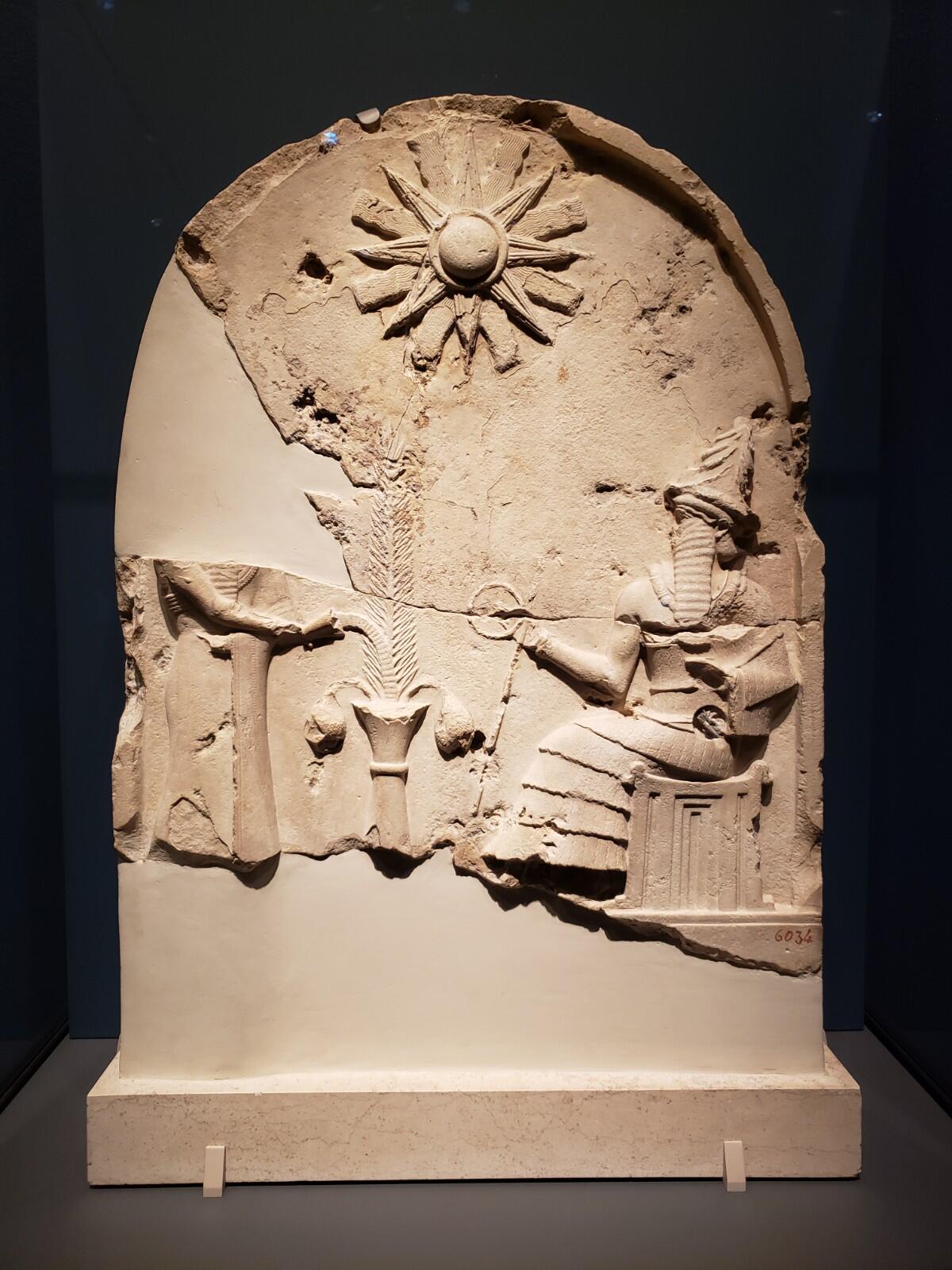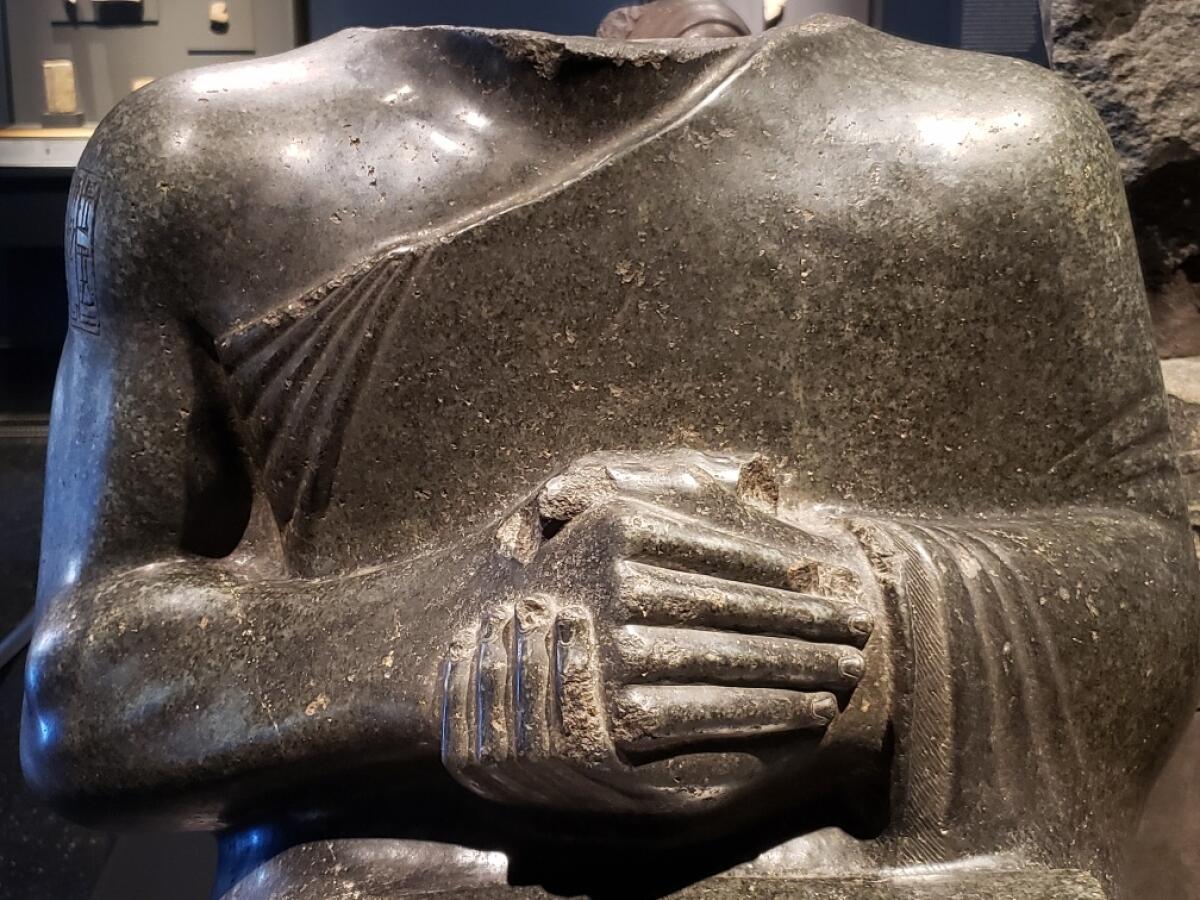Review: Getty Villa reopens with ancient treasures from the Louvre

To reopen Wednesday after a yearlong closure during the COVID-19 pandemic, the Getty Villa has at last unveiled âMesopotamia: Civilization Begins.â The show, originally scheduled to open in March 2020, is a small but absorbing look at some of the ancient art produced along the Middle Eastâs famous Fertile Crescent between the Tigris and Euphrates rivers, centered in modern-day Iraq.
In considering civilizationâs origins, the museum has gone back to square one. Or, at least, it has gone back to one beginning. Mesopotamia began to emerge in force around 3400 BC, but aboriginal civilization in Australia predates it by tens of thousands of years.
An entry wall text in the exhibition, as well as the introductory essay in its very readable catalog, both get more specific: Mesopotamia represents the start of the city as a framework for social and cultural life, rather than rural, nomadic or village experience. Uruk, Akkad, Babylon, Nineveh and more â the show would be better titled âMesopotamia: Urban Civilization Begins.â
Cities have been dominant power centers globally ever since, and we have a habit of privileging centralized authority as universal. Be that as it may, there is no denying the profound effect Mesopotamia had on shaping the last 5,000-plus years. What began then continues today in other guises.
One difficulty faced by the curators â Getty Museum Director Timothy Potts and, especially, Ariane Thomas of the department of Near Eastern antiquities at the Louvre Museum, which lent all but a few of the showâs more than 130 objects from its vast Mesopotamian holdings â was how to tell a story spanning a couple thousand years and in limited space. Adapted from a larger 2016 Louvre exhibition tracking through multiple dynasties, the exhibition that fills three modest galleries at the Villa forgoes chronology. Instead, it is are built around three defining aspects of Mesopotamiaâs urban development.
The epic innovations are the worldâs first cities, first writing and first kings.
The opening gallery considers the creation of the city itself. Large numbers of people banded together in one place for security from the harsh cruelties and everyday vagaries of the world.

The development of irrigation farming made a city possible, securing a steady food source. An elegant, shallow relief carved in limestone (and probably once painted) is an elaborate consecration of the practice: A small palm tree is being watered in a chalice while an enthroned sun god raises a hand in blessing.
Deities â hundreds of them â were said to protect dwellers inside city walls while demons roamed outside. An extraordinary silver vase for holy offerings is incised with line drawings of a lion-headed eagle, attribute of a rainstorm god, with two reclining ibexes and two lions clutched helplessly in its talons.
Next up is the invention of writing. The dense, wedge-shaped impressions of cuneiform marks in clay tablets (or sometimes cut into stone) are lovely if â to most modern eyes â unreadable abstractions. They wash across the clay surface like roiling eddies in a stream.
Writing was essential to the bureaucratic organization of complex society. (The Code of Hammurabi, 282 edicts chiseled into a 7-foot, 4-ton slab of black diorite, is the most famous example; the stele, a linchpin of the Louvreâs 10,000-piece collection, is not in the exhibition.) Most cuneiform texts deciphered since the 19th century are significant because they are mundane, chronicling trade deals, land swaps and other administrative orders revealing daily life.
But the written word was also soon established as a new form for artistic expression. It launched as poetry in beseeching hymns to a goddess by the first published author â a woman named Enheduanna.
Apparently, to get your stuff published it was helpful to be the daughter of a powerful Akkadian king.
Finally, the very idea of kingship itself was fabricated. The king, a position of focused power amid the urban throng, was located on a scale somewhere between humanity and the gods. For an ordinary Sumerian or Babylonian toiling in the fields or working at the market, a male monarch functioned as a remote yet visible bridge between mortal earth and eternal heaven.
In some respects, this royal room brings us back to the first, where that limestone relief in praise of city-making irrigation is shown. A compact, 2-foot statue of Prince Gudea carved in speckled, dark-gray igneous dolerite has him clutching a vase close to his chest. Water studded with fishes miraculously overflows from the vase, cascading in rhythmic ripples down the rulerâs sides.
The prince is embodied as both source and guardian of sustenance â water from a stone, as it were, the carvingâs repetitions of pattern an appreciated signal of continuity. Mesopotamian kingship was conceived as being descended from heaven, an ancient precursor to what would become, a few thousand years on, a corrosive doctrine of the divine right of kings.
Another almost life-size statue of Gudea â this one headless, so without the tight, wide-rimmed wool cap that elsewhere immediately identifies him â shows the prince seated and with a blank tablet on his lap. A measurement stick and stylus indicate heâs the architect of the temple for which the statue was likely carved. Stylistically, these bulky sculptures are like many in the show, whether large or small â solid, blockish, refined but not delicate.
The space between his bare, muscled arm and his sleek, clothed torso is indicated in shallow relief, but the hole is not fully carved out. The same goes for the space beneath the stool on which Gudea-as-architect sits: The legs and stretcher bars between them are described as surface forms protruding from an airless, solid stone block. The space below his skirt is opened, but mostly to reveal stubby, columnar legs and firmly planted feet.

The prince clasps his hands in front of him, prayerfully but unnaturally. Tubular fingers are lined up side by side or stacked one atop the next, like bound bundles of reeds. (Try it yourself to see how formally awkward and affected the pose is.) The overall visual result is dense, unyielding, robust, idealized, strong, durable â everything you might want in a leader sent from a supernatural realm to help with uncertain earthly survival.
If one aim of urbanization is to defeat the forces of chaos waiting right outside the city walls, these stylistic features are essential. Gudea looks a bit like a fireplug. Naturalism just wouldnât cut it.
âMesopotamia: Civilization Beginsâ coincides with a long-running Villa installation of Assyrian carved-stone reliefs, on loan until September 2022 from Londonâs British Museum. The pairing, although stylistically different, amplifies both. Like the Assyrian palace reliefs of charioteers or banqueters, a colorful glazed relief of a striding lion taken from the brick walls of Babylonâs main street embeds an image of power in the very stuff of the cityâs construction.
Rather than a mural painted on a city or palace wall, this is art that is the wall itself.
At the Getty Villa, pandemic safety protocols are in place, including mask requirements and timed reservations to limit attendance. The show can at times be a bit awkward to see, since only seven visitors at one time are allowed in each gallery. (The short hallway displaying carved cylinder and stamping seals between the second and third room can be a bottleneck.) Such is life in a modern, civilized city.
'Mesopotamia: Civilization Begins'
Where: Getty Villa, 17985 Pacific Coast Highway, Pacific Palisades
When: Through Aug. 16. Closed Tuesdays.
Admission: Free; timed reservations required
Info: (310) 440-7300, getty.edu
More to Read
The biggest entertainment stories
Get our big stories about Hollywood, film, television, music, arts, culture and more right in your inbox as soon as they publish.
You may occasionally receive promotional content from the Los Angeles Times.











